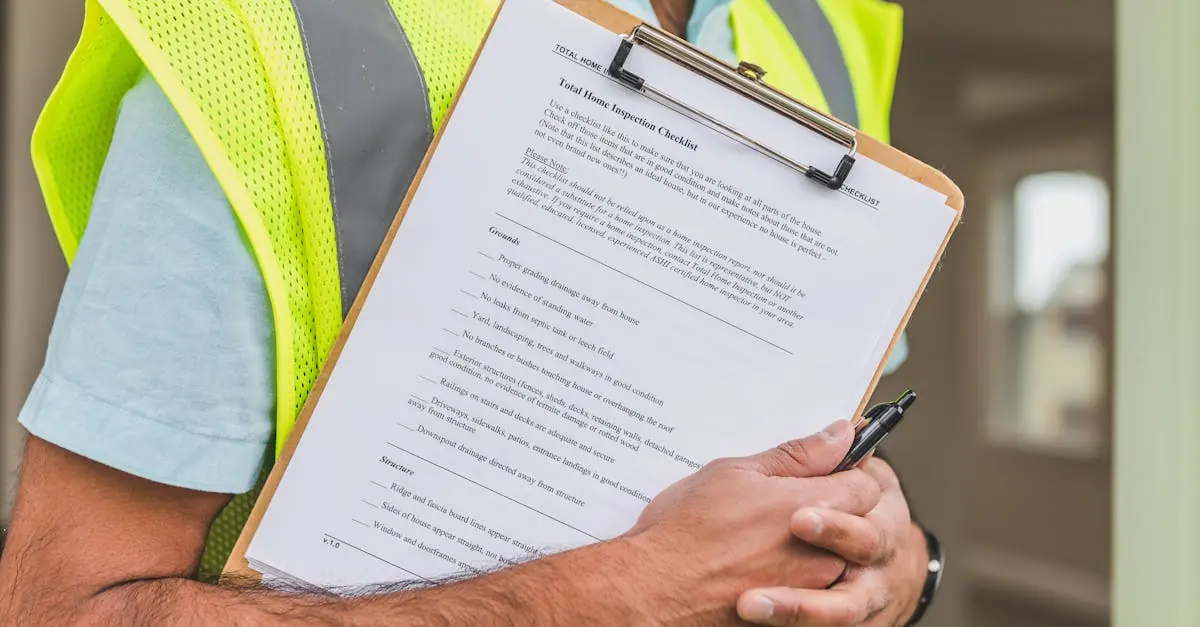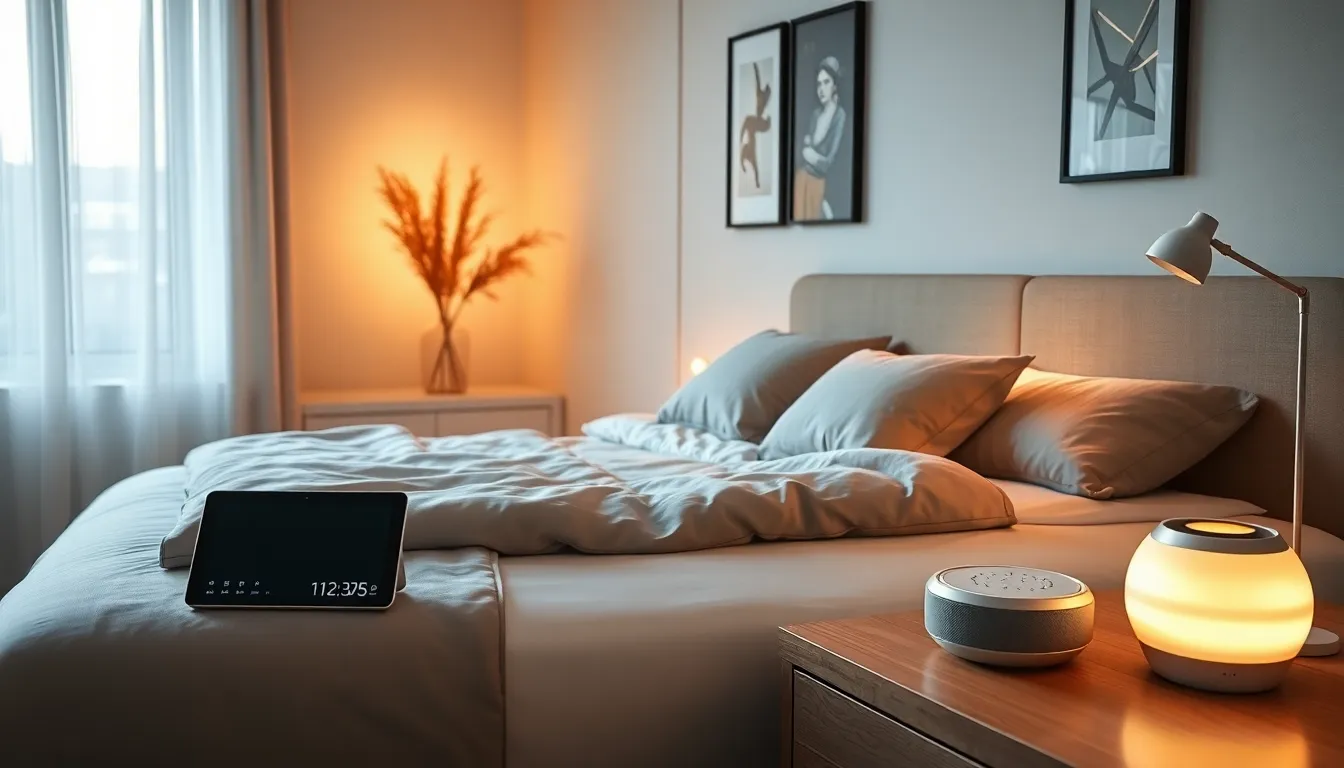As winter approaches, many folks cozy up to their fireplaces, dreaming of crackling flames and hot cocoa. But before diving into that blissful scene, it’s crucial to ensure the fireplace is in tip-top shape. After all, no one wants to turn their living room into a smoke-filled disaster zone.
Table of Contents
ToggleImportance Of Fireplace Maintenance
Maintaining a fireplace ensures safety and efficiency during its use. Regular inspections prevent dangerous situations like chimney fires, which can result from creosote buildup. A clean fireplace also improves air quality by reducing smoke and harmful pollutants released indoors.
Homeowners benefit from recognizing signs of wear or damage. Inspecting flue liners, for instance, ensures proper venting and decreases the risk of carbon monoxide poisoning. It’s crucial to assess the condition of the fireplace’s structure as well; cracks or loose bricks may compromise stability.
Seasonal maintenance checklists provide a systematic way to keep the fireplace in optimal condition. These lists often include cleaning chimneys, checking for blockages, and examining the damper for functionality. Scheduling inspections with qualified professionals enhances safety and compliance with local regulations.
Additionally, regular maintenance extends the lifespan of the fireplace and its components. Replacing parts like the damper or screens promptly can prevent more costly repairs later. Homeowners often find that investing in upkeep pays off in the long run through improved performance and reduced energy bills.
Emphasizing importance goes beyond safety; it enriches the overall fireplace experience. A well-maintained fireplace operates more efficiently, providing consistent heat and a comfortable ambiance. Engaging in maintenance practices fosters peace of mind, allowing individuals to enjoy their fireplace without worry.
Seasonal Maintenance Tasks
Seasonal maintenance tasks ensure fireplace safety and efficiency. Performing these tasks regularly enhances performance and promotes a cozy atmosphere.
Fall Preparation
Fall preparation involves several critical tasks. Inspect the chimney for blockages like nests or debris before the first fire. Clean the flue to remove creosote buildup, which can pose a fire hazard. Verify that the damper opens and closes easily to maintain airflow. Replace any worn gaskets or seals on the fireplace door, as efficient sealing improves performance. Check smoke detectors and carbon monoxide detectors; working batteries are essential for home safety. Finally, stock up on quality firewood to ensure an efficient burn when temperatures drop.
Winter Checks
Winter checks help maintain optimal fireplace function. Monitor the firewood supply to ensure an ample amount for cold nights ahead. Inspect the firebox for cracks or signs of wear, which may indicate the need for repairs. Ensure the chimney cap is intact, preventing snow and debris from entering the flue. Evaluate the draft to make certain smoke is venting properly and not entering the living space. After each use, sweep the ashes to enhance airflow for the next fire. Regularly check for signs of deterioration in components; early detection prevents costly repairs later on.
Annual Inspection Steps
Annual inspections play a vital role in maintaining fireplace safety and performance. These steps ensure thorough checks for potential issues that could lead to hazards.
Inspecting The Chimney
Chimney inspection focuses on identifying blockages and ensuring proper venting. Use a camera for a detailed visual inspection of the flue. Creosote buildup poses a significant fire risk, so cleaning is essential if deposits exceed 1/8 inch. Checking for cracks or deterioration in the masonry contributes to maintaining structural integrity. Ensure that the chimney cap is secure to prevent debris from entering. Local codes often dictate maintenance frequency, so adhering to these regulations reflects commitment to safety.
Examining The Firebox
Firebox examinations assess condition and safety. Inspect for cracks or warping that could indicate damage. Replace damaged bricks or panels promptly to maintain efficiency. Clean out ash and debris regularly to improve airflow and combustion. Checking the firebox’s seal ensures that smoke and gases are ventilated properly. Additionally, verify the condition of the fireplace door and its gaskets to prevent heat loss and improve safety. Regular checks of these components contribute to a safe and efficient fireplace experience.
Cleaning Practices
Cleaning practices are essential for maintaining fireplace efficiency and safety. Regular cleaning ensures that users enjoy a clear view of the flames and improved air quality.
Removing Ashes
Removing ashes after each use prevents buildup that can impede airflow. It’s advisable to wait until ashes cool before disposal. A metal container works best for storing ashes until they’re disposed of properly. Cleaning the firebox weekly during active use helps maintain a safe environment. Proper removal can reduce the risk of residue that may harbor harmful substances.
Cleaning The Glass Doors
Cleaning the glass doors enhances visibility and contributes to a better fireplace experience. A non-abrasive cleaner or a mixture of vinegar and water effectively removes soot and grime. Applying the cleaner with a soft cloth prevents scratching. Frequent cleaning helps maintain the glass’s clarity, allowing the flames to shine brightly. Ensuring cleanliness also aids in overall fireplace function, making it safer and more enjoyable.
Safety Considerations
Safety remains a priority when using a fireplace. Proper maintenance and regular checks reduce risks significantly.
Carbon Monoxide Detectors
Carbon monoxide detectors should be installed near the fireplace. These devices alert homeowners to dangerous gas levels, which can occur during fires. Battery-operated models ensure functionality even during power outages. It’s crucial to test these detectors monthly to confirm they operate correctly. Replacing batteries annually is also recommended, safeguarding from any potential failures. When detectors reach the end of their lifespan, usually after five to seven years, homeowners need to replace them to maintain safety.
Proper Ventilation
Proper ventilation is essential for fireplace efficiency and safety. Adequate airflow prevents the buildup of harmful gases within the home. Chimneys must remain clear of debris, ensuring smooth airflow. When using a fireplace, opening the windows slightly can help increase ventilation, promoting better combustion. During winter, avoiding blockages, such as snow or ice, around the chimney cap is critical for maintaining airflow. Regular inspection of vents should occur to ensure optimal performance and reduce risks associated with smoke inhalation.
Conclusion
Maintaining a fireplace is essential for safety and efficiency during the colder months. By following a seasonal maintenance checklist and scheduling regular inspections, homeowners can prevent hazards and ensure their fireplace operates smoothly. Awareness of potential issues like creosote buildup and structural damage is crucial for avoiding dangerous situations.
Incorporating simple practices such as cleaning ashes and checking detectors can make a significant difference in overall fireplace performance. A well-maintained fireplace not only enhances the cozy atmosphere but also contributes to better indoor air quality and energy savings. Prioritizing fireplace maintenance allows individuals to enjoy the warmth and comfort of their fireplace with confidence.



